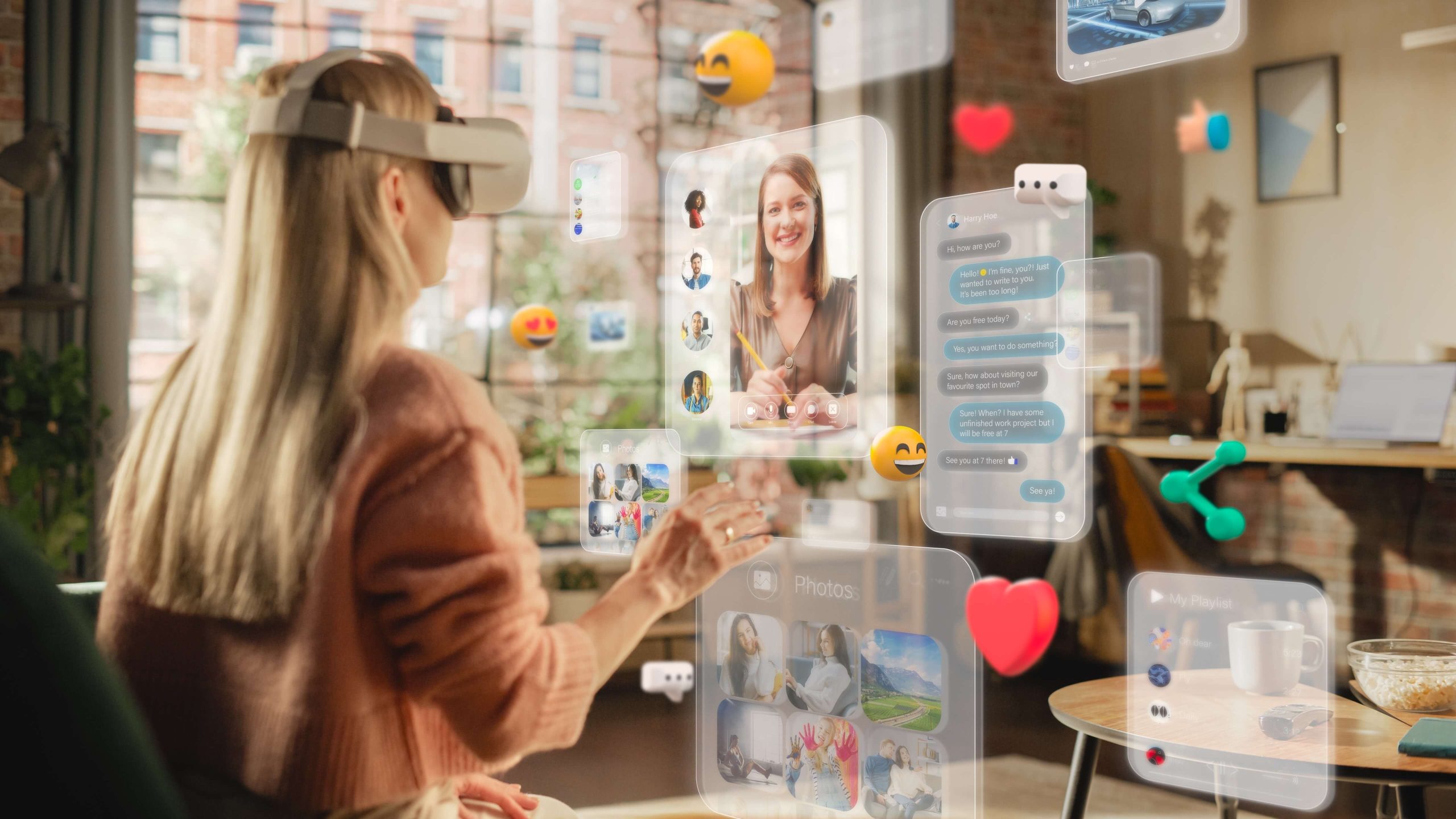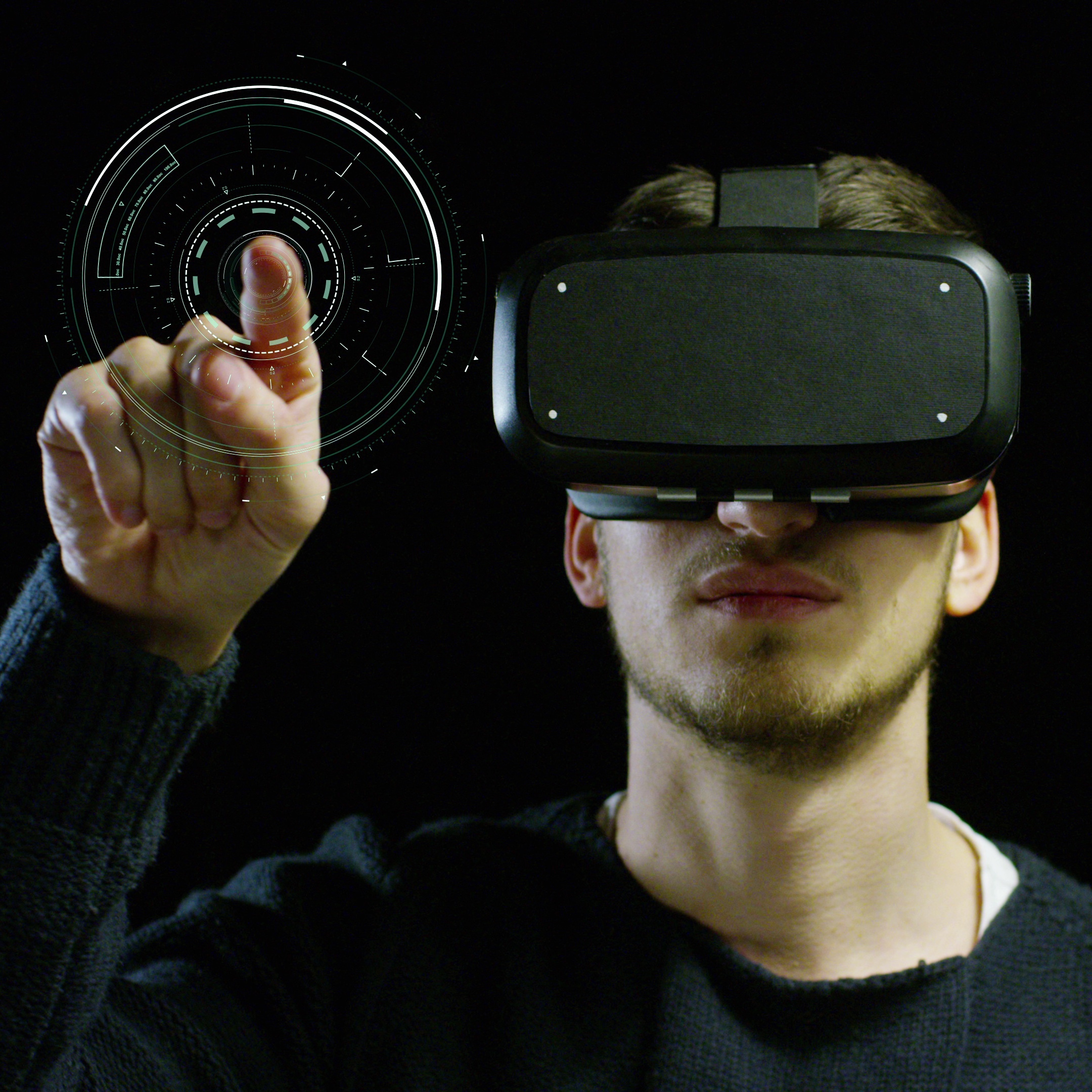Embracing the Future: How AR and VR Are Revolutionizing Virtual Meetings
In the wake of a global pivot to remote work, businesses and employees have quickly become accustomed to the convenience and efficiency of virtual meetings. This seismic shift wasn’t just about adapting to the times; it was a harbinger of a more profound transformation in how we perceive and conduct business interactions. Initially, platforms like Skype paved the way, but soon, Zoom, Google Meet, and Microsoft Teams filled the digital landscape, each bringing new features and capabilities to the table. This evolution wasn’t just about overcoming geographical barriers; it was about redefining the essence of collaboration and communication.
With Zoom clocking over 3.3 trillion annual meeting minutes and a market cap soaring above $75 billion as of 2023, the message is clear: the world has not just adapted to but embraced virtual meetings. This widespread acceptance has set the stage for more innovative technologies to enhance these experiences further. Leading the charge are Augmented Reality (AR) and Virtual Reality (VR), technologies poised to redefine the future of virtual meetings.
The Future of Virtual Meetings: Benefits and Use-Cases of AR and VR
Embarking into the realm of augmented and virtual realities, we’re not just stepping into new technologies; we’re leaping into a future where the essence of virtual meetings transforms entirely. AR and VR stand at the forefront of this revolution, offering capabilities far beyond the constraints of our screens. These technologies are weaving a new fabric for business interactions, where the virtual space becomes as tangible and interactive as the physical. From placing virtual objects in real environments to visualizing complex data in immersive settings, AR and VR are redefining collaboration, making meetings not a task but an experience. As we delve into the specifics, let’s explore how these innovations are setting the stage for the future of virtual meetings:
-
- Virtual Object Placement: Imagine discussing a prototype with your team scattered across the globe. With AR, this product can be virtually placed in each team member’s physical space, allowing for a hands-on examination as if the object were physically present. This not only enhances product demonstrations but also facilitates a deeper understanding and collaboration on modifications in real-time.
-
- Data Visualization: AR transforms the way we interpret complex data. By projecting statistical graphs and 3D models into our physical environment, AR enables a more intuitive grasp of information, turning abstract numbers into tangible visuals that enhance decision-making processes.
-
- Remote Assistance: In fields requiring precision, like engineering or surgery, AR provides real-time guidance. For instance, a senior surgeon could remotely assist a procedure by overlaying digital markers on a digital model of the patient’s anatomy, visible to the operating surgeon through AR glasses.
-
- Improved Collaboration: VR meetings transcend geographical barriers, creating a shared virtual space that mimics physical presence. Tools like Program-Ace’s MetaOffice illustrate how virtual reality can bring teams together in customizable environments, fostering a sense of unity and collaborative spirit. Additionally, according to Accenture, a vast majority of young professionals are keen to try virtual collaborations with their teammates.
-
- Enhanced Participation: Platforms such as Spatial have revolutionized customer engagement by hosting virtual lobbies where users from different locations can explore products and interact with brands in a more immersive manner. This not only boosts customer interest but also provides valuable feedback in real time. Marriott provides immersive event spaces for both social gatherings and corporate functions. To help planners and guests envision their dream event, Marriott utilizes innovative VR technology, offering a lifelike preview of potential setups and atmospheres.
-
- Stress Reduction: Virtual meetings offer a less intimidating environment for participants, reducing anxiety associated with in-person presentations and encouraging more open communication. And with VR, these meetings become as engaging and realistic as a physical meeting.
-
- Boosted Productivity: Leveraging immersive technologies in the workplace transforms operations by streamlining access to information and enhancing collaborative efforts. The IBM Institute of Business Value reports that companies that use AR have reported an average productivity improvement of 32% and a 46% reduction in time to complete tasks.
-
- Efficient Troubleshooting: AR and VR can streamline post-sale support by allowing customers and technicians to share the same virtual view of a product or issue, facilitating quicker resolutions and enhancing customer satisfaction.
- Building Relationships: The immersive nature of AR and VR meetings fosters a stronger sense of connection among participants, making interactions feel more personal and building trust more effectively than traditional video calls.
Ready to Embrace the Future of Virtual Meetings? AR and VR Tools to Try
Embracing the future of virtual meetings means equipping ourselves with the right tools for the journey. Augmented Reality (AR) and Virtual Reality (VR) have introduced a dynamic array of applications designed to redefine how we collaborate and communicate in the digital space. Let’s explore the cutting-edge tools that empower us to unlock the full potential of AR and VR, paving the way for the future of virtual meetings.
-
- Program-Ace MetaOffice: This VR platform merges virtual reality with collaboration tools, enabling participants to interact in a shared digital space. Its features support dynamic presentations and brainstorming sessions, bridging the gap between virtual and physical interaction.
-
- Spatial: Originally designed for AR headsets, Spatial has expanded its reach to VR, offering a versatile platform for team meetings. Its environment supports file sharing and interactive discussions, making it an ideal choice for creative and strategic planning sessions.
-
- MeetinVR: Catering to businesses looking for customizable VR meeting spaces, MeetinVR allows for a variety of collaborative activities. Its tools support everything from product design to strategic planning, enabling teams to work together as if they were in the same room.
-
- Horizon Workrooms: Facebook’s Horizon Workrooms leverages the Oculus Quest to provide a virtual meeting space where participants can collaborate as avatars. The platform’s integration with traditional work tools, like document sharing and whiteboarding, makes it a seamless extension of the physical office into the virtual realm.
-
- Glue: With a focus on larger organizations, Glue offers expansive virtual environments designed for team collaboration. Its security features and intuitive interface make it suitable for confidential and complex projects, accommodating meetings of up to 20 participants.
- Raum: Aimed at facilitating collaborative workshops and brainstorming sessions, Raum offers guided formats and tools that support creative problem-solving. It is a valuable resource for teams looking to leverage VR for more effective planning and decision-making.
Bringing Virtual Meetings at Par With Physical Meetings
Technologies like AR and VR are all set to define the future of virtual meetings. These technologies are not just potential tools but are the beacon leading us toward a future where virtual meetings are as rich and engaging as their physical counterparts. These technologies offer a breadth of possibilities, from enhancing product demonstrations to fostering deeper connections among remote teams. As companies continue to explore and adopt these tools, the landscape of professional communication will evolve, making meetings more engaging, productive, and inclusive. With magineu at the forefront of this transformation, businesses have a unique opportunity to redefine their approach to collaboration and customer engagement, leveraging the full potential of immersive technologies.



